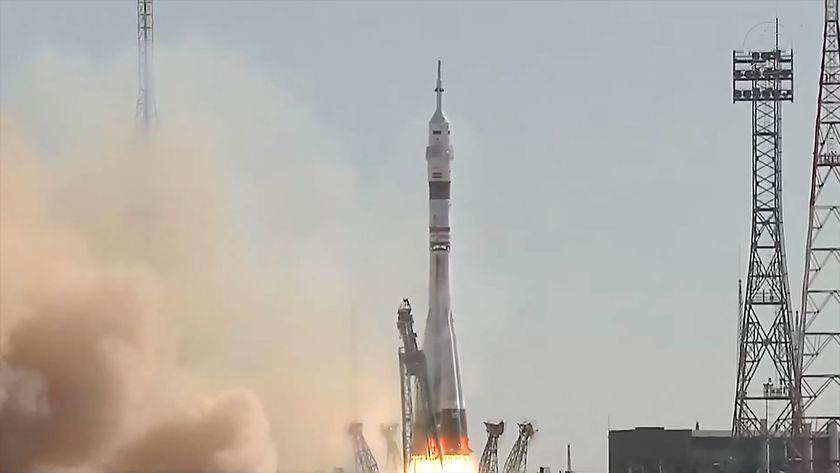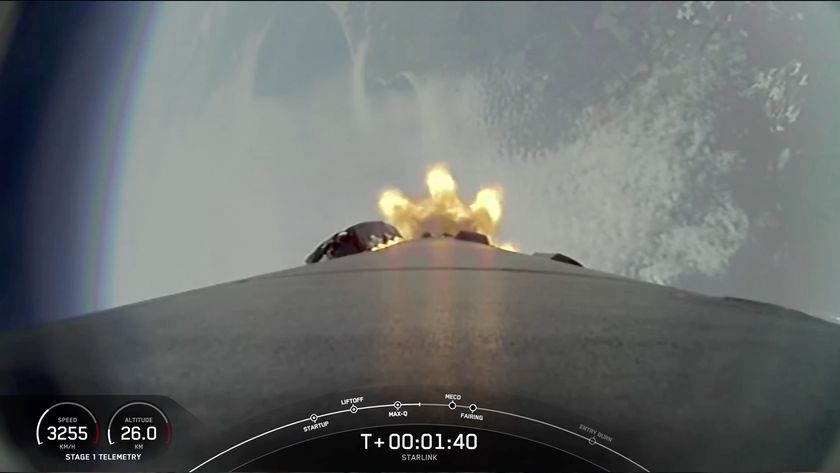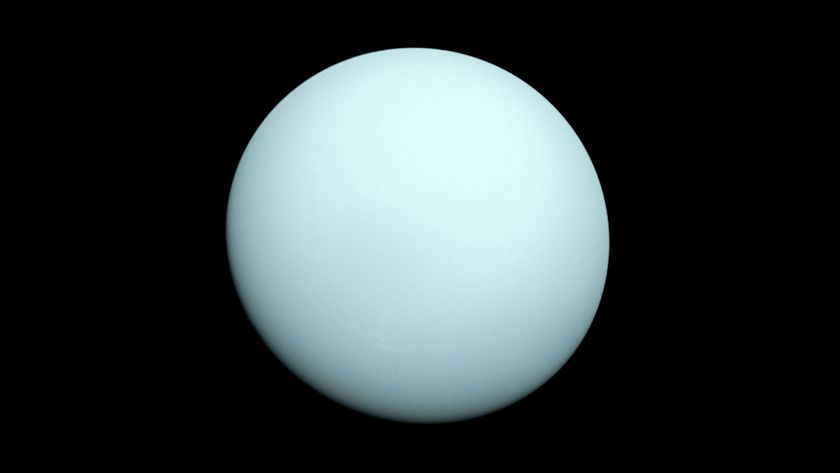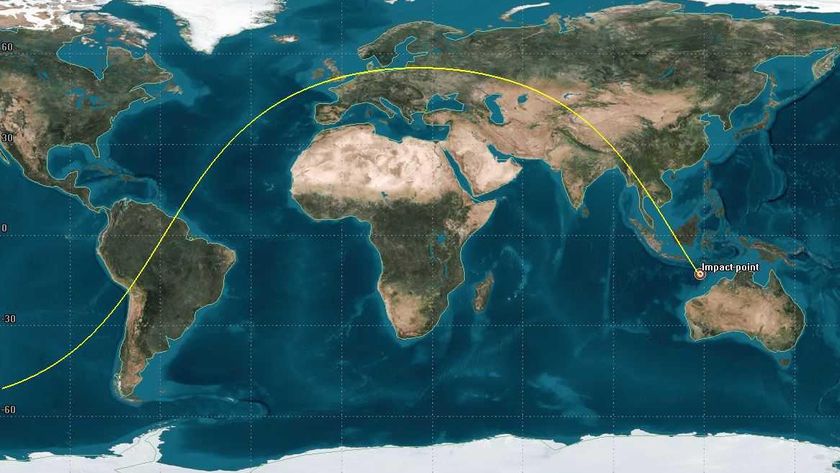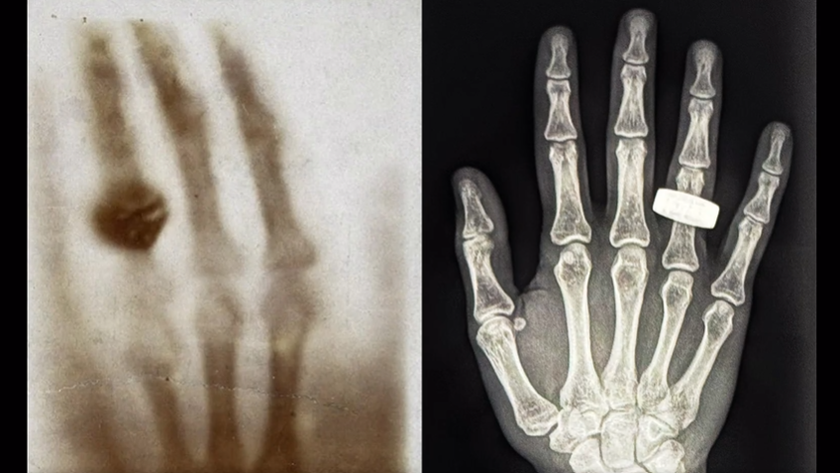NASA's DART spacecraft will crash into an asteroid tonight in historic planetary defense test
"Hitting an asteroid is a tough thing to do."
Brace for impact.
NASA's Double Asteroid Redirection Test (DART) spacecraft is hurtling toward the asteroid Didymos and its moonlet Dimorphos, and it'll reach its target tonight (Sept. 26). At 7:14 p.m. EDT (2314 GMT), if all goes well, DART will crash into Dimorphos in an attempt to alter the moonlet's trajectory. The mission is meant to test the theory that this technique could be used to divert an asteroid heading straight for Earth.
While neither Dimorphos nor Didymos pose a threat to our planet, and nothing that happens today can change that, the results of the DART mission will provide crucial data for scientists and engineers to develop plans for planetary defense. DART, which is managed for NASA by Johns Hopkins University Applied Physics Laboratory (JHUAPL), marks the first-ever planetary defense test. You can watch the DART asteroid impact live online, courtesy of NASA, beginning at 6 p.m. EDT (2200 GMT).
"This is an exciting time, not only for the agency but in space history and in the history of humankind, quite frankly," Lindley Johnson, NASA's planetary defense officer, said in a news conference held on Thursday (Sept. 22). "This demonstration is extremely important to our future here on Earth."
Related: What time is NASA's DART asteroid impact and how to watch?
More: 8 ways to stop an asteroid
DART launched atop a SpaceX Falcon 9 rocket on Nov. 23, 2021, and has since been traveling the 7 million miles (11 million kilometers) to Didymos and Dimorphos.
As DART approaches Dimorphos, it will use its sole instrument, the Didymos Reconnaissance and Asteroid Camera for Optical navigation (DRACO), to autonomously navigate to its impact zone. Considering that scientists estimate Dimorphos has a diameter of just 560 feet (170 meters), that's no easy task.
Get the Space.com Newsletter
Breaking space news, the latest updates on rocket launches, skywatching events and more!
"Dimorphos is a tiny asteroid," Tom Statler, the mission's program scientist at NASA, said during the news conference. "We've never seen it up close, we don't know what it looks like, we don't know what the shape is. And that's just one of the things that leads to the technical challenges of DART. Hitting an asteroid is a tough thing to do."
For context, Elena Adams, DART mission systems engineer at JHUAPL, said that DRACO won't even spot Dimorphos until about an hour before impact, at which point it'll be just one pixel in DRACO's field of view. "At three minutes prior to impact, two minutes prior to impact, it is 42 pixels in size," Adams said during the news conference.
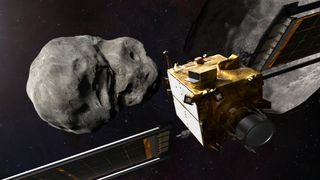
NASA expects DRACO to beam down to Earth one image per second as it approaches Dimorphos at a speed of 4.1 miles per second (6.6 km/s), or 14,760 mph (23,760 kph). The agency will broadcast those images to the public in real-time on a dedicated stream. NASA will simultaneously broadcast additional live coverage of the event beginning at 6 p.m. EDT (2200 GMT). You can tune into either broadcast here on Space.com, as well as on NASA TV, NASA's website, and NASA's social media channels. NASA will also hold a news conference after the impact, at 8 p.m. EDT (0000 GMT).
"The engineering team will be celebrating, and the astronomers, at that moment, will be saying, 'OK, time to get to work,'" Statler said.
Follow Stefanie Waldek on Twitter @StefanieWaldek. Follow us on Twitter @Spacedotcom and on Facebook.
Join our Space Forums to keep talking space on the latest missions, night sky and more! And if you have a news tip, correction or comment, let us know at: community@space.com.

Space.com contributing writer Stefanie Waldek is a self-taught space nerd and aviation geek who is passionate about all things spaceflight and astronomy. With a background in travel and design journalism, as well as a Bachelor of Arts degree from New York University, she specializes in the budding space tourism industry and Earth-based astrotourism. In her free time, you can find her watching rocket launches or looking up at the stars, wondering what is out there. Learn more about her work at www.stefaniewaldek.com.


